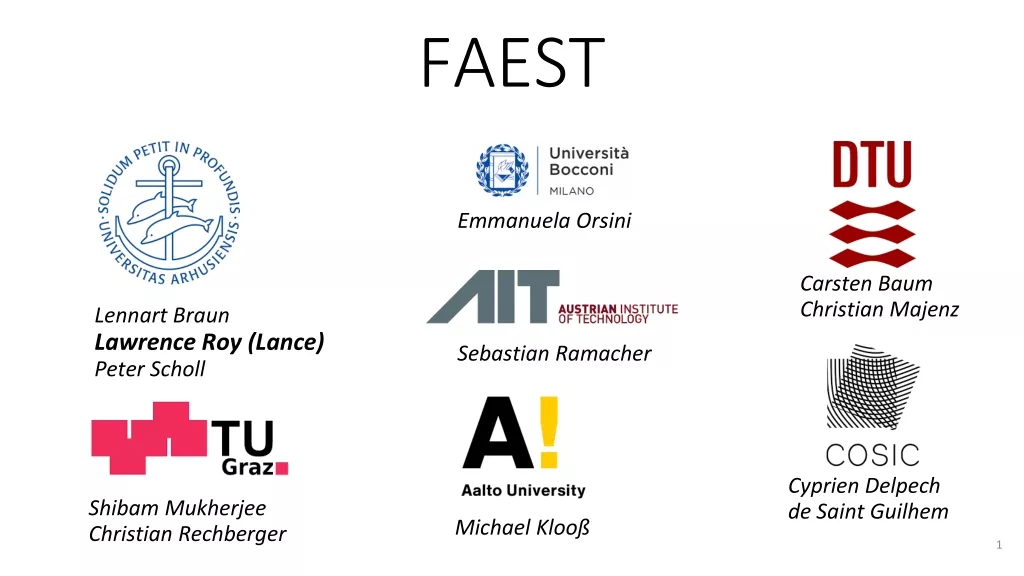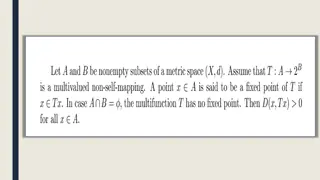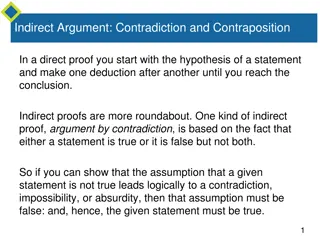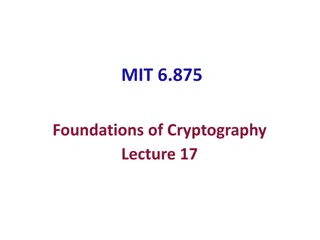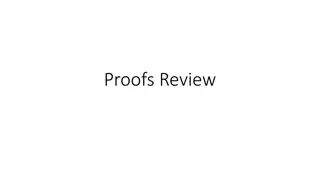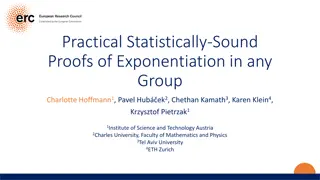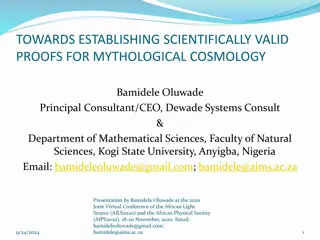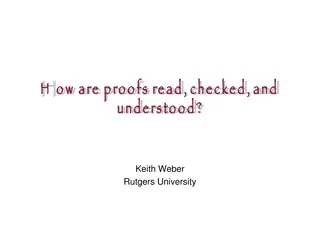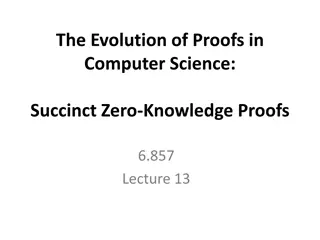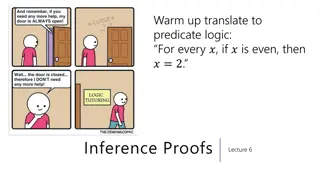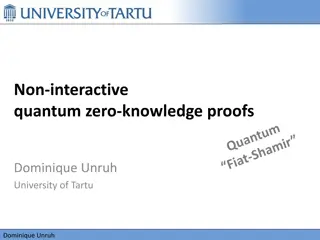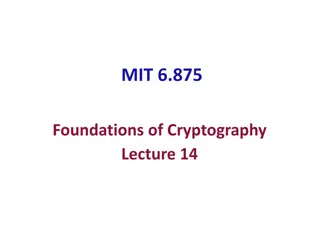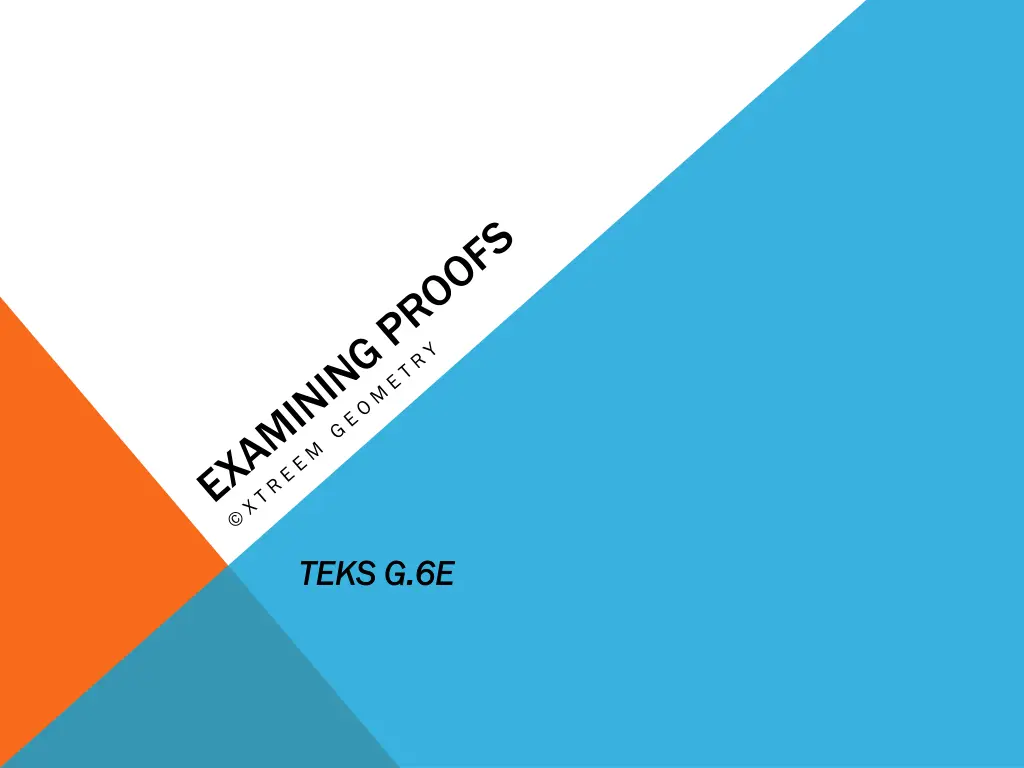
Exploring Quadrilateral Proofs with Converse and Evaluation
Dive into the world of quadrilateral proofs by examining the relationship between parallelograms and diagonals. Explore different proof formats, understand the characteristics of a good proof, and put your skills to the test with a detailed evaluation. Enhance your mathematical reasoning and problem-solving abilities through this engaging study of geometric concepts.
Download Presentation

Please find below an Image/Link to download the presentation.
The content on the website is provided AS IS for your information and personal use only. It may not be sold, licensed, or shared on other websites without obtaining consent from the author. If you encounter any issues during the download, it is possible that the publisher has removed the file from their server.
You are allowed to download the files provided on this website for personal or commercial use, subject to the condition that they are used lawfully. All files are the property of their respective owners.
The content on the website is provided AS IS for your information and personal use only. It may not be sold, licensed, or shared on other websites without obtaining consent from the author.
E N D
Presentation Transcript
TEKS G.6E TEKS G.6E
Engage Engage IS THIS A VALID STATEMENT? The The square whose side is 21 cm has the square whose side is 21 cm has the same area as the rectangle whose sides same area as the rectangle whose sides are 34 are 34 cm and 13 cm. cm and 13 cm.
Explore Explore GIVEN THIS STATEMENT, EXAMINE THE PROOF: I If a quadrilateral is a parallelogram, then its f a quadrilateral is a parallelogram, then its diagonals bisect each other. diagonals bisect each other. Proof Proof Format Format Group A: Paragraph proof Group B: Two-column proof Group C: Flowchart proof
Explain Explain BACK AT YOUR TABLES, COMPARE & CONTRAST THE DIFFERENT FORMATS FOR THE PROOF: I If a quadrilateral is a parallelogram, then its f a quadrilateral is a parallelogram, then its diagonals bisect each other. diagonals bisect each other. Proof format Proof format Advantages Advantages Disadvantages Disadvantages Paragraph proof Two-column proof Flowchart proof
Explain Explain A GOOD PROOF IS Brainstorm what are characteristics of a good proof.
Elaborate Elaborate PROVE THE FOLLOWING (USING ANY OF THE 3 FORMATS WE JUST STUDIED) Converse: Converse: If If the diagonals of the diagonals of a quadrilateral bisect each a quadrilateral bisect each other, other, then the then the quadrilateral is quadrilateral is a parallelogram. a parallelogram.
Evaluate Evaluate EVALUATE ANOTHER S PROOF: If If the diagonals of the diagonals of a quadrilateral bisect each a quadrilateral bisect each other, quadrilateral is quadrilateral is a parallelogram. a parallelogram. other, then the then the Points Possible Points Possible 5: 5: 3: 3: Proof is correct 2: 2: Proof is correct but incomplete 1: 1: Proof is incorrect but includes elements of a proof 0: 0: No Response Supporting Components in a Proof: 2: Multiple Components 2: Multiple Components: Response contains more than one representation used in the service of creating a solution to the task. 1: Single Components 1: Single Components: : Response contains only a single representation used in the service of creating a solution to the task. A written sentence or sentences that simply states the answer, but does not add any mathematical explanation, does not qualify as a second representation. Components could include: Components could include: o Mathematical Argument: The proof follows a mathematical argument, one that follows rules for argumentation in the mathematical domain. o Establishes Truth: The proof establishes a given statement or conjecture as true. o Based on Mathematical Facts: The proof is based on mathematical facts, previously proven results, or unproved assumptions that are agreed-upon by the person creating the proof and/or the mathematical community at large.
(6) Proof and congruence. The student uses the process skills with deductive reasoning to prove and apply theorems by using a variety of methods such as coordinate, transformational, and axiomatic and formats such as two-column, paragraph, and flow chart. The student is expected to: (A) verify theorems about angles formed by the intersection of lines and line segments, including vertical angles, and angles formed by parallel lines cut by a transversal and prove equidistance between the endpoints of a segment and points on its perpendicular bisector and apply these relationships to solve problems; (B) prove two triangles are congruent by applying the Side-Angle-Side, Angle-Side-Angle, Side-Side-Side, Angle-Angle-Side, and Hypotenuse-Leg congruence conditions; (C) apply the definition of congruence, in terms of rigid transformations, to identify congruent figures and their corresponding sides and angles; (D) verify theorems about the relationships in triangles, including proof of the Pythagorean Theorem, the sum of interior angles, base angles of isosceles triangles, midsegments, and medians, and apply these relationships to solve problems; and (E) prove a quadrilateral is a parallelogram, rectangle, square, or rhombus using opposite sides, opposite angles, or diagonals and apply these relationships to solve problems.

